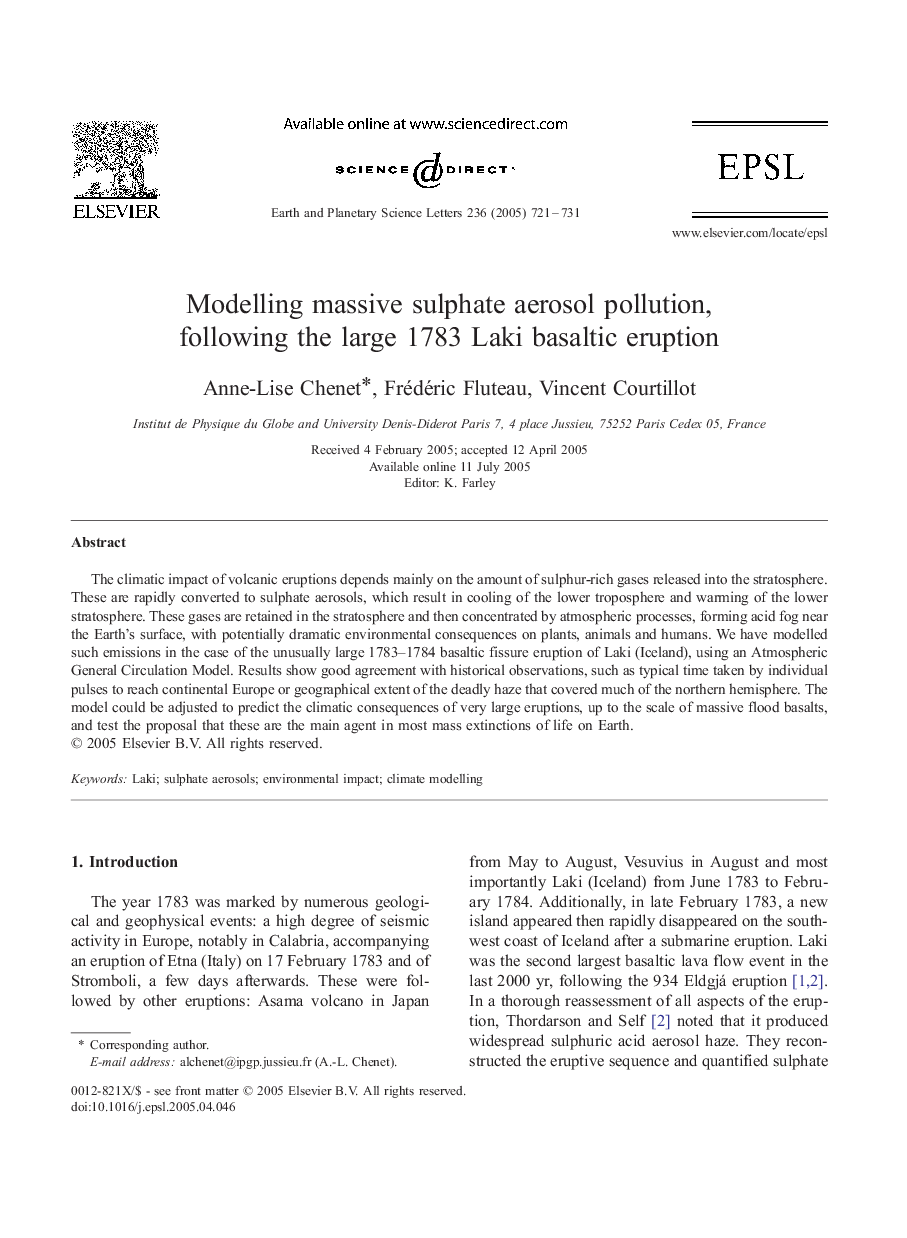| Article ID | Journal | Published Year | Pages | File Type |
|---|---|---|---|---|
| 9522666 | Earth and Planetary Science Letters | 2005 | 11 Pages |
Abstract
The climatic impact of volcanic eruptions depends mainly on the amount of sulphur-rich gases released into the stratosphere. These are rapidly converted to sulphate aerosols, which result in cooling of the lower troposphere and warming of the lower stratosphere. These gases are retained in the stratosphere and then concentrated by atmospheric processes, forming acid fog near the Earth's surface, with potentially dramatic environmental consequences on plants, animals and humans. We have modelled such emissions in the case of the unusually large 1783-1784 basaltic fissure eruption of Laki (Iceland), using an Atmospheric General Circulation Model. Results show good agreement with historical observations, such as typical time taken by individual pulses to reach continental Europe or geographical extent of the deadly haze that covered much of the northern hemisphere. The model could be adjusted to predict the climatic consequences of very large eruptions, up to the scale of massive flood basalts, and test the proposal that these are the main agent in most mass extinctions of life on Earth.
Related Topics
Physical Sciences and Engineering
Earth and Planetary Sciences
Earth and Planetary Sciences (General)
Authors
Anne-Lise Chenet, Frédéric Fluteau, Vincent Courtillot,
